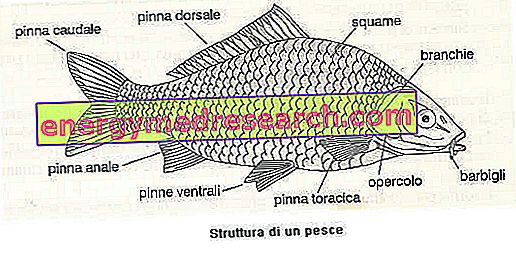Tempeh is a derivative of soy; it is a fermented food that, due to its appearance and perhaps also to the good protein content, is also called soya meat .

NB . The tempeh is a food preserved in brine, therefore the sodium content is significantly higher than the raw material of origin.
The culinary applications of the tempeh are different; it can be an ingredient to accompany with first courses or bread, but also to eat stewed, fried or steamed similar to a dish; just like a piece of meat!
Production
To produce tempeh it is necessary to partially cook the soybeans; then we proceed with the addition of vinegar and then with the inoculation of fermenting microorganisms. These are basically represented by a fungus (mold) belonging to the family Mucoraceae: the Rhizopus oligosporus . The mixture is then spread and left to ferment for 24 hours at a temperature of about 30 ° C, so that the Rhizopus oligosporus can synthesize the characteristic mycelia (ramifications) that give solidity and compactness to the tempeh. NB . The microbial action causes the release of little ammonia.
Nutritional characteristics
As anticipated, tempeh is a more digestible food than soy from which it is produced; this characteristic is attributable to the action of Rhizopus oligosporus which, in addition to partially degrading proteins (fungal peptidase), determines an almost definitive splitting of oligosaccharides (raffinose and stachinosio) generally responsible for meteorism and intestinal tension produced by ingested legumes.
Nutritional values per 100g of tempeh | |
 | |
| Power | 166.0 kcal |
| Protein | 20, 7g |
| Lipids | 6.4 g |
| Carbohydrates | 6.4 g |
| Cholesterol | 0 mg |
Furthermore, if the processing soy was used raw, anti-nutritional molecules such as peptidase inhibitors and amylase inhibitors would be present in the tempeh; on the contrary, undergoing initial firing, these unwanted molecules undergo a significant thermal inactivation losing all inhibitory effect on digestion.
Tempeh can be used successfully in improving vegan regimes but cannot replace meat; compared to it, the tempeh boasts strengths and weaknesses. However, even assuming that (from the point of view of biological value) soy proteins can be properly compensated, the legume in question DOES NOT contain cobalamin (vit. B12). This vitamin - essential for the synthesis of nucleic acids and whose deficiency (in the long term) can induce pernicious anemia - is contained exclusively in foods of animal origin (debated the presence in some algae); some studies have examined the presence of vit. B12 also within the tempeh but, alas, they all gave conflicting results; but fortunately the reason is also understood! To produce tempeh it is necessary to inoculate microorganisms; these, as for the cheeses, are intentionally selected strains but the composition of which necessarily varies according to the location and the growing environment. It can be seen that, for example, the tempeh produced in Indonesia will never be identical to that produced in Germany; at this point the reader will ask what is the correlation between the fermentation stock and the cobalamin content of the tempeh. Well, vitamin B12 is a synthesis product exclusively bacterial and man introduces it by eating meat that already contains it (thanks to the synthesis of the intestinal bacterial flora of the animal itself and to the fortification of the feeds).
NB . In dairy products (cheese and yogurt) the content of cobalamin is increased by fermentation microorganisms.
In short, it seems that the microbial strains inoculated in different areas of the planet do not have the same pro-vitaminizing effect on the tempeh, therefore, this food cannot be considered a valid contributor of vitamin B12.
It is however necessary to specify that the tempeh boasts many other valuable nutritional characteristics; it has dietary fiber, complex carbohydrates useful for supplying energy, medium biological value proteins, polyunsaturated and essential lipids (ω3), mineral salts (iron and magnesium), vitamins and cholesterol-lowering molecules such as phytosterols, saponins and lecithins; therefore, provided that you do not exceed the overall sodium intake, in the context of a balanced diet the tempeh can also be consumed with good frequency.
Homemade Tempeh - Video Recipe
Tempeh - Soy meat
X Problems with video playback? Reload from YouTube Go to Video Page Go to Video Recipes Section Watch the video on youtube



